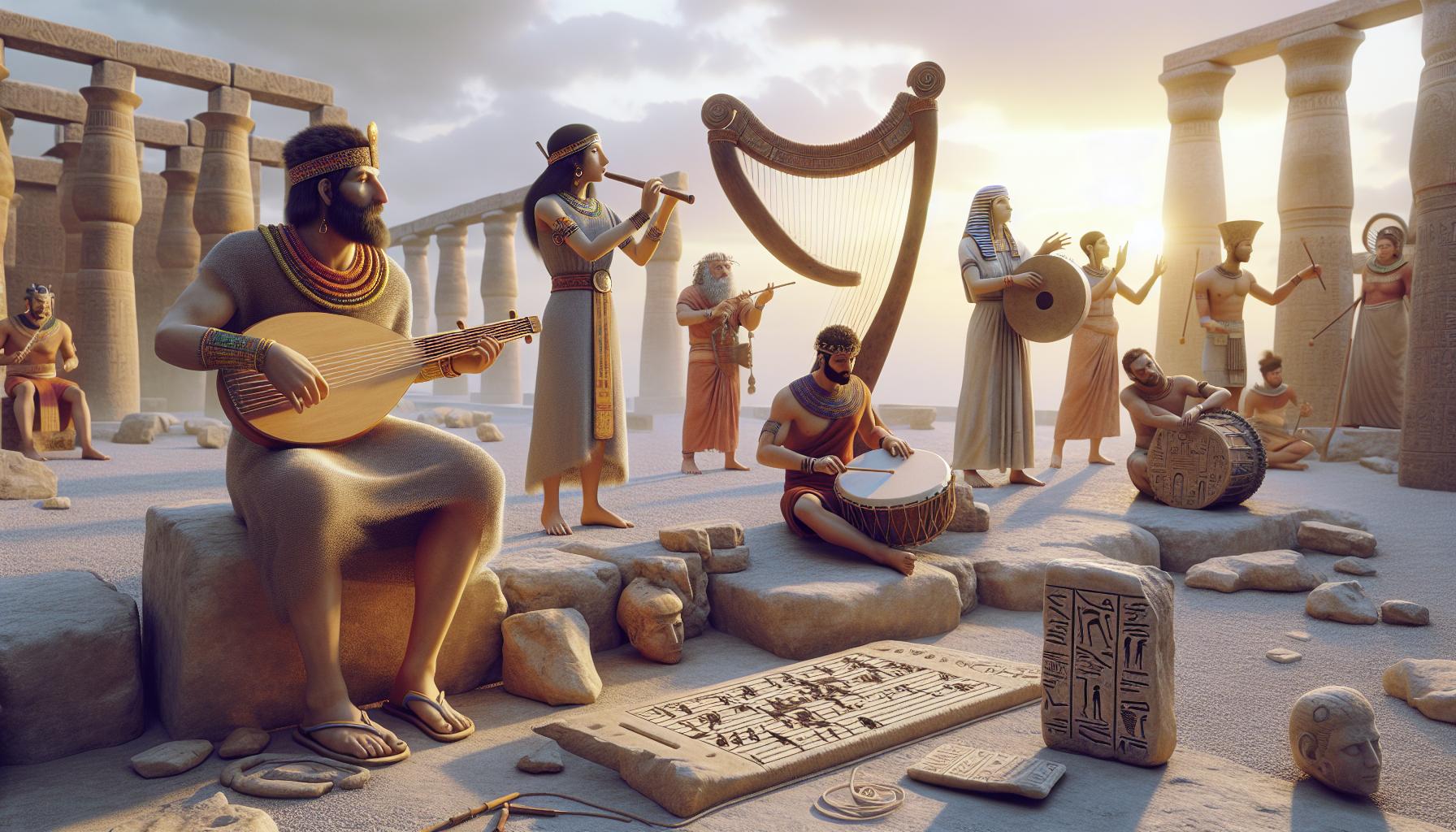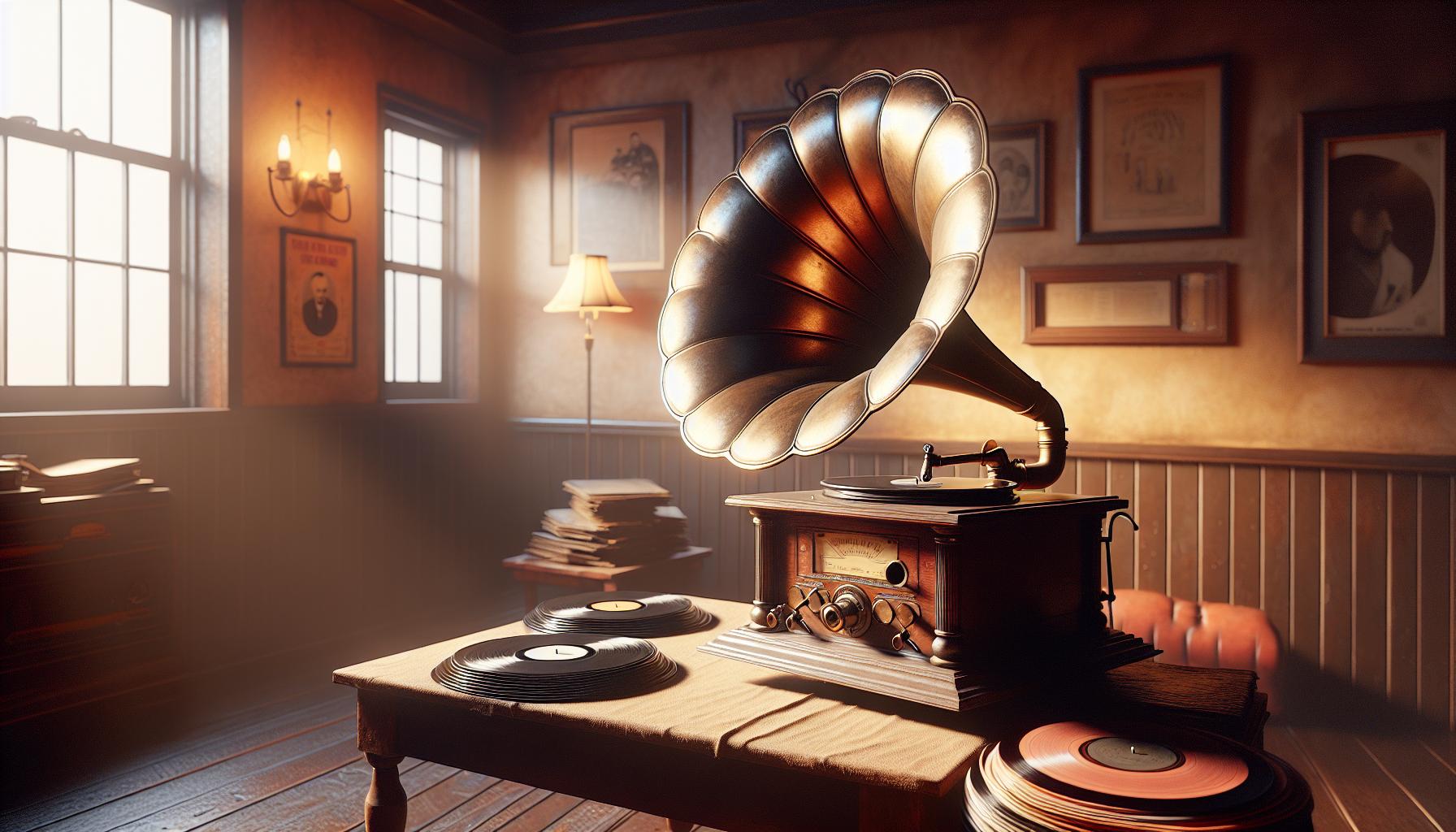Music has been an integral part of human culture for centuries, evolving alongside society itself. The journey from ancient melodies to modern soundscapes is fascinating, marked by the invention of recording technology that forever changed how music is created and consumed. Understanding the first records of music offers a glimpse into this transformative era, revealing how artists captured their art for future generations.
The earliest recordings, often made on fragile cylinders and discs, paved the way for the music industry as we know it today. These pioneering efforts not only preserved the sounds of their time but also laid the foundation for the diverse genres that thrive now. By exploring these initial recordings, one uncovers the roots of musical innovation and the enduring impact of those first notes etched in history.
Key Takeaways
- The Evolution of Music: Music has been a fundamental part of human culture for centuries, evolving alongside societal changes and technological advancements.
- First Music Recordings: The initial recordings in the late 19th century, starting with Edison’s phonograph, marked a revolutionary shift in how music was captured and preserved.
- Role of Record Companies: The emergence of record companies and standardized formats in the early 1900s significantly increased music accessibility and promoted artist visibility.
- Cultural Preservation: Early recordings played a crucial role in preserving diverse musical traditions, allowing unique cultural expressions to resonate through generations.
- Impact on Music Industry: The introduction of recording technology transformed the music industry, facilitating mass production and creating new marketing strategies and revenue models for artists.
First Records of Music Records
Music records represent a pivotal development in the preservation and dissemination of musical art. The earliest audio recordings date back to the late 19th century. With devices like the phonograph, inventors captured sound waves on medium such as tin foil and wax cylinders. These recordings displayed the voice and instruments like never before, enabling both personal enjoyment and public sharing.
Early recordings featured various genres, including folk, classical, and early popular music. The first commercially successful recording, “Mary Had a Little Lamb,” made by Thomas Edison in 1877, illustrated the potential of this new technology. Following this, Emile Berliner developed the flat disc record in 1887, allowing for improved sound quality and easier mass production.
The transition from cylinders to discs marked significant progress in the music industry. By the early 1900s, record companies began to emerge, promoting artists and recording labels such as Victor and Columbia. These companies standardized formats and pioneered marketing strategies, which significantly broadened music access.
Labeling and cataloging also evolved with the music record industry. The introduction of catalog numbers allowed consumers to easily identify and purchase music. Consequently, this system increased awareness and appreciation of different artists, contributing to music’s cultural significance.
Throughout the 20th century, the evolution of music records continued, incorporating technological advancements like magnetic tape and digital formats. Each transformation broadened the reach of music, connecting global audiences to artists and styles previously unavailable. Thus, the journey from fragile cylinders to sophisticated digital formats underscores music records’ enduring impact on the cultural landscape.
Historical Context of Music

Music has deep roots in human history, reflecting cultural practices across various eras and societies. Understanding these beginnings is essential for appreciating the evolution of musical recordings.
Ancient Music Traditions
Ancient music traditions offer insights into the social and spiritual lives of early civilizations. Music served integral purposes, from religious ceremonies to community celebrations. Sumerians, Egyptians, and Greeks utilized instruments like lyres, flutes, and drums, each contributing unique sounds to their cultural expressions. Archaeological discoveries reveal tools and artifacts that underscore music’s importance in rituals and daily life. For instance, the Sumerians created cuneiform tablets containing musical notations, highlighting early attempts at formalizing music.
Early Written Accounts
Early written accounts of music trace back to 1400 BCE, with references found in ancient texts and inscriptions. The Greeks documented various theories of music, notably Pythagoras, who explored musical intervals and harmony. In addition, Guido of Arezzo introduced the staff notation system in the 11th century, enhancing the ability to record and communicate musical ideas accurately. These accounts laid the groundwork for future musical notations and formal structures, influencing the development of Western music theory. Such records not only reflect the musical practices of their time but also demonstrate the longstanding human desire to preserve and share musical experiences.
The First Records of Music

The advent of recording technology marked a revolutionary shift in music history. Capturing sound for preservation fundamentally transformed how music was produced and consumed.
Invention of Recording Technology
The invention of recording technology began in the late 19th century with Thomas Edison’s phonograph. This device recorded sound waves onto tin foil cylinders, enabling sound capture for the first time. Following Edison’s innovation, Emile Berliner introduced the flat disc format in 1887, which improved sound quality significantly. This shift allowed for mass production, creating opportunities for record companies to standardize formats. Advancements continued with the development of wax cylinders and later, magnetic tape, which broadened the music landscape.
Notable Early Recordings
Important early recordings include:
- Edison’s “Mary Had a Little Lamb” (1877) – One of the first recordings, showcasing the potential of capturing music.
- Enrico Caruso’s opera performances (1902) – These records demonstrated the appeal of vocal recordings and popularized classical music.
- Covering folk music – Early folk recordings, like those of the Carter Family in the 1920s, preserved regional cultural expressions.
- Jelly Roll Morton’s jazz recordings (1923) – These tracks captured the essence of early jazz, influencing future genres.
Such recordings laid the groundwork for the diverse music industry of today, connecting artists with audiences across generations.
Impact of Early Music Records

Early music records played a crucial role in shaping cultural perceptions and industry frameworks. Their introduction for public consumption transformed how audiences interacted with music.
Cultural Significance
Cultural significance of early music records is profound. They preserved diverse musical traditions, allowing unique cultural expressions to resonate across generations. Records provided a platform for artists from varied backgrounds, promoting cross-cultural exchange. By capturing local sounds, they documented and celebrated regional identities, further embedding music into social narratives and community bonding. The recordings of folk songs, classical compositions, and jazz performances reinforced cultural heritage, ensuring that historical contexts remained accessible. Landmark releases, such as the traditional African American spirituals, not only showcased artistry but also spotlighted social issues, making music a vehicle for cultural discourse.
Evolution of Music Industry
Evolution of the music industry occurred rapidly with the adoption of early records. The transition from cylinders to flat discs enabled mass production, creating a standardized format that increased accessibility. This shift led to the establishment of major record labels, which organized and marketed musicians efficiently. Catalogue numbers and album branding helped forge consumer loyalty and recognition. Recording contracts emerged, providing artists with opportunities to negotiate royalties and rights, setting precedents that persist today. Moreover, the rise of radio in the early 20th century expanded music distribution beyond local spheres, connecting wider audiences to recorded music and laying the groundwork for future genres and formats in the digital age.
The journey of music from ancient traditions to recorded sound reflects humanity’s creativity and cultural evolution. Early recordings not only captured the essence of their time but also paved the way for a thriving music industry. As technology advanced, it transformed how music was produced and consumed, connecting artists and audiences like never before.
These foundational moments in music history laid the groundwork for diverse genres and styles that continue to resonate today. The impact of early records is still felt in modern music, shaping cultural perceptions and fostering a rich tapestry of musical expression. Ultimately, the story of first records serves as a testament to music’s enduring power and significance in society.